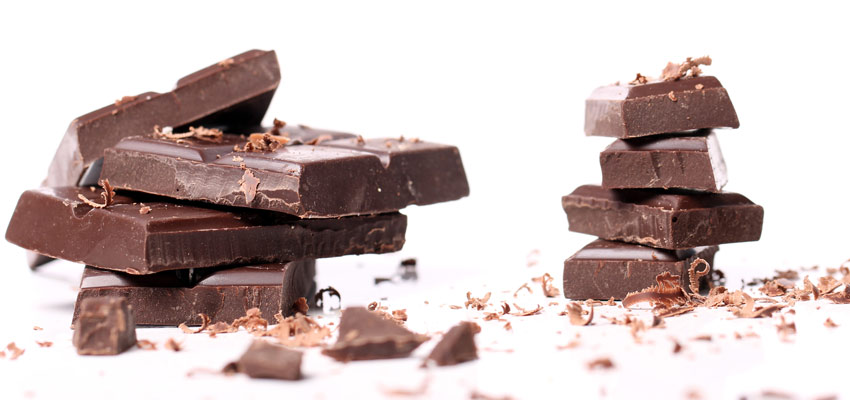With the amendment of the Contaminants Regulation (EU) 2023/915 by Regulation (EU) 2024/1987 of 30 July 2024, the maximum permitted levels for certain foods have been revised. These new maximum levels will apply from 1 July 2025.
| 3.6 | Nickel | Maximum residue level (mg/kg) | Remarks |
| 3.6.1 | Tree Nuts | The maximum level applies to the edible part. The maximum level does not apply to tree nuts for crushing and oil refining, provided that the remaining pressed tree nuts are not placed on the market as food. In case the remaining pressed tree nuts are placed on the market as food, the maximum level applies, taking into account Article 3(1) and (2). | |
| 3.6.1.1 | Tree nuts except products listed in 3.6.1.2 | 3,5 | |
| 3.6.1.2 | Chestnuts, pine nuts, walnuts, Brazil nuts, and cashew nuts | 10 | |
| 3.6.2 | Root and tuber vegetables and bulb vegetables | 0,9 | The maximum level applies to the wet weight. The maximum level applies after washing and separating the edible part. For potatoes, the maximum level applies to peeled potatoes. |
| 3.6.3 | Fruiting vegetables | 0,4 | The maximum level applies to the wet weight. The maximum level applies after washing and separating the edible part. |
| 3.6.4 | Brassica vegetables | 0,5 | The maximum level applies to the wet weight. The maximum level applies after washing and separating the edible part. |
| 3.6.5 | Leafy vegetables | The maximum level applies to the wet weight. The maximum level applies after washing and separating the edible part. | |
| 3.6.5.1 | Leafy vegetables except products listed in 3.6.5.2 | 0,5 | The maximum level applies to the wet weight. The maximum level applies after washing and separating the edible part. |
| 3.6.5.2 | Fresh herbs | 1,2 | |
| 3.6.6 | Legume vegetables | The maximum level applies to the wet weight. The maximum level applies after washing and separating the edible part. | |
| 3.6.6.1 | Legume vegetables except products listed in 3.6.6.2 | 1 | |
| 3.6.6.2 | Soy beans / edamame (Glycine max) | 6 | |
| 3.6.7 | Stem vegetables | 0,4 | The maximum level applies to the wet weight. The maximum level applies after washing and separating the edible part. |
| 3.6.8 | Seaweed | Bei getrocknetem Seetang gilt der Höchstgehalt für das Erzeugnis, wie es in Verkehr gebracht wird. Bei frischem Seetang gilt der Höchstgehalt für den abgetrennten und gewaschenen genießbaren Teil. Bei frischem Seetang gilt der Höchstgehalt bezogen auf die Trockensubstanz.(*) | |
| 3.6.8.1 | Seaweed except products listed in 3.6.8.2 | 30 | |
| 3.6.8.2 | Wakame | 40 | |
| 3.6.9 | Pulses | ||
| 3.6.9.1 | Pulses except products listed in 3.6.9.2 | 4 | |
| 3.6.9.2 | Dry beans and dry lupins / lupini beans | 12 | |
| 3.6.10 | Oilseeds | The maximum level does not apply to oilseeds for crushing and oil refining, provided that the remaining pressed oilseeds are not placed on the market as food. In case the remaining pressed oilseeds are placed on the market as food, the maximum level applies, taking into account Article 3(1) and (2). | |
| 3.6.10.1 | Sunflower seed | 8 | |
| 3.6.10.2 | Peanuts | 12 | |
| 3.6.10.3 | Soy beans | 15 | |
| 3.6.11 | Cereals | The maximum level does not apply to cereals used for the production of beer or distillates, provided that the remaining cereal residue is not placed on the market for the final consumer as food. In case the remaining cereal residue is placed on the market for the final consumer as food, the maximum level applies, taking into account Article 3(1) and (2). | |
| 3.6.11.1 | Cereals except products listed in 3.6.11.2, 3.6.11.3, 3.6.11.4 and 3.6.11.5 | 0,8 | As from 1 July 2026 |
| 3.6.11.2 | Durum wheat (Triticum durum) and rice except products listed in 3.6.11.3 | 1,5 | As from 1 July 2026 |
| 3.6.11.3 | Husked rice | 2 | As from 1 July 2026 |
| 3.6.11.4 | Pseudo cereals and millet | 3 | As from 1 July 2026 |
| 3.6.11.5 | Oats | 5 | As from 1 July 2026; The maximum level applies to oats grains without the inedible husk. To calculate the maximum level for oats grains with the inedible husk a processing factor of 1,5 needs to be applied, resulting in an maximum level of 7,5 mg/kg for oats with the inedible husk. |
| 3.6.12 | Cocoa and chocolate products (14) | ||
| 3.6.12.1 | Milk chocolate with < 30 % total dry cocoa solids | 2,5 | |
| 3.6.12.2 | Milk chocolate with ≥ 30 % total dry cocoa solids and chocolate | 7 | |
| 3.6.12.3 | Cocoa powder and fat reduced cocoa powder placed on the market for the final consumer or as an ingredient in sweetened cocoa powder or powdered chocolate placed on the market for the final consumer (drinking chocolate) | 15 | |
| 3.6.13 | Infant formulae, follow-on formulae, food for special medical purposes intended for infants and young children (3) and young-child formulae (4), | The maximum level applies to the product as placed on the market. | |
| 3.6.13.1 | placed on the market as powder except products listed in 3.6.13.2 | 0,25 | |
| 3.6.13.2 | placed on the market as powder and manufactured from soy protein isolates, alone or in a mixture with cow’s milk proteins | 0,4 | |
| 3.6.13.3 | placed on the market as liquid | 0,1 | |
| 3.6.14 | Processed cereal-based food for infants and young children (3) | 3 | The maximum level applies to the product as placed on the market. |
| 3.6.15 | Baby food (3) except products listed in 3.6.16. | 0,5 | The maximum level applies to the product as placed on the market. |
| 3.6.16 | Fruit juices (9), fruit nectars (9) and vegetable juices including fruit juices (9), fruit nectars (9) and vegetable juices intended as babyfood (3). | ||
| 3.6.16.1 | Fruit juices, fruit nectars and vegetable juices except products listed in 3.6.16.2 | 0,25 | |
| 3.6.16.2 | Fruit juices and fruit nectars containing juices and nectars from passion fruits, cocoa fruits, and from small fruits and berries and coconut water | 1 | |
| (*) | Dry matter is determined in accordance with Commission Regulation (EC) No 333/2007 of 28 March 2007laying down the methods of sampling and analysis for the control of the levels of trace elements and processing contaminants in foodstuffs (OJ L 88, 29.3.2007, p. 29, ELI: ).’. |
For products manufactured and placed on the market before 1 July 2025, a use-by date applies until the expiry date.
YOUR PLUS: The AGROLAB GROUP's food laboratories determine nickel residues in food, along with other heavy metals, as part of their daily routine tests – reliably, quickly and affordably.
Author: Dr. Frank Mörsberger, AGROLAB GROUP

 Contact
Contact

 Contact
Contact Career
Career